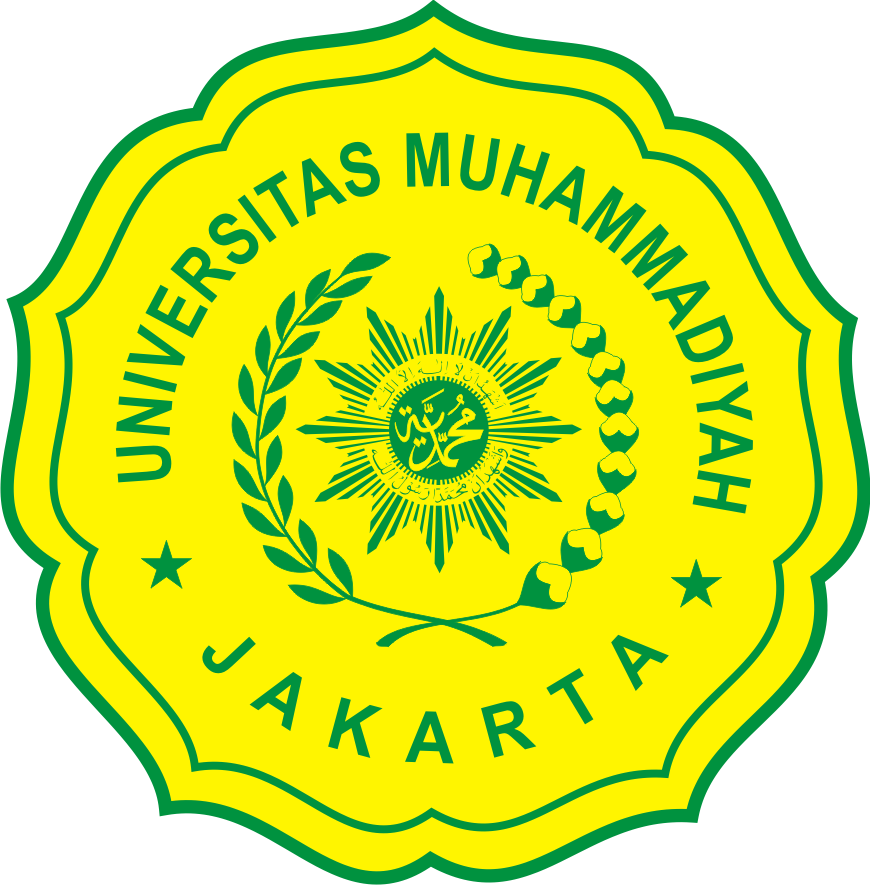Comparative Analysis of Waterwheel Efficiency Using Nozzle and Open Canal on Waterway
Abstract
Keywords
Full Text:
PDFReferences
R. Kurnia, R. Wibowo, and A. Z. Hudaya, “Perancangan Turbin Air Tipe Overshot Sebagai Prototipe Pembangkit Listrik Tenaga Microhidro di Sungai Rahtawu,” 2022.
K. Kosjoko, “Cros Flow As Turbine Power Plant Minihidro (Pltm) Village To Self Energy,” Info-Teknik, vol. 16, no. 2, pp. 159–170, 2016.
B. Mei Hermawan et al., “Studi Eksperimen Karakteristik Kinerja Kincir Air sebagai Pembangkit Listrik Skala Mikrohidro,” Jurnal Rekayasa Mesin, vol. 16, no. 3, pp. 475–485, 2021, [Online]. Available: https://jurnal.polines.ac.id/index.php/rekayasa
R. Pietersz, R. Soenoko, and S. Wahyudi, “Pengaruh Jumlah Sudu Terhadap Optimalisasi Kinerja Turbin Kinetik Roda Tunggal,” Jurnal Rekayasa Mesin, vol. 4, no. 3, pp. 220–226, 2013.
D. Catra Daksa, A. Imam Agung, S. Isnur Haryudo, and Ibrohim, “Prototipe Penstabil Tegangan Pada Pembangkit Listrik Tenaga Mikro Hidro,” Jurnal Teknik Elektro, vol. 9, no. 3, pp. 669–675, 2020.
M. R. Ramdhani, R. Irwansyah, Budiarso, Warjito, and D. Adanta, “Investigation of the 16 blades pico scale breastshot waterwheel performance in actual river condition,” Journal of Advanced Research in Fluid Mechanics and Thermal Sciences, vol. 75, no. 1, pp. 38–47, 2020, doi: 10.37934/ARFMTS.75.1.3847.
A. Junaidi, Rinaldi, and A. Hendri, “Model Fisik Kincir Air Sebagai Pembangkit Listrik,” Jom FTEKNIK, vol. 1, no. 2, pp. 1–9, 2014.
A. D. Pangestu and N. Kn, “Pembangkit Listrik Tenaga Air Dengan Teknik Turbulent Whirlpool,” Ikraith-Teknologi, vol. 5, no. 3, pp. 58–65, 2021.
E. Lestari, N. Pramestuti, and U. F. Trisnawati, “Laporan akhir penelitian risbinkes,” no. 29, 2019.
Rahmatullah and U. Khairul, “Development of New Renewable Energy Hybrid System,” vol. 16, no. 1, pp. 46–52, 2022, doi: 10.24853/sintek.16.1.46-52.
P. Ramadan, “Analisa Efisiensi Daya Pembangkit Listrik Tenaga Pico – Hydro Dengan Memanfaatkan Tekanan Air Keluaran High Pressure Car Wash Pump 100 Watt 8L Permenit,” 2019.
O. Henry, A. Daud, and H. Haki, “Analisis Pengaruh Perubahan Dimensi Kincir Air Terhadap Kecepatan Aliran Air (Studi Kasus: Desa Pandan Enim),” Jurnal Teknik Sipil dan Lingkungan, vol. 1, no. 1, pp. 001–004, 2013.
E. Prihastuty and H. D. Harsono, “Perancangan Kincir Air Undershot Sebagai Penggerak Awal Pompa,” Mestro, pp. 1–7, 2019.
A. B. Nadeak, “Unjuk Kerja Kincir Air Breastshot Dengan Sudu 150 Derajat,” Program Studi Teknik Mesin, Jurusan Teknik Mesin, Fakultas Sains Dan Teknologi, Universitas Sanata Dharma, Yogyakarta, vol. 01, pp. 1–7, 2017.
A. Bachan, N. Ghimire, J. Eisner, S. Chitrakar, and H. Prasad Neopane, “Numerical analysis of low-tech overshot water wheel for off grid purpose,” in Journal of Physics: Conference Series, 2019. doi: 10.1088/1742-6596/1266/1/012001.
E. Quaranta and R. Revelli, “Output power and power losses estimation for an overshot water wheel,” Renewable Energy, vol. 83, pp. 979–987, 2015, doi: 10.1016/j.renene.2015.05.018.
A. Buku and I. L. K. Wong, “A laboratory scale curve bladed undershot water wheel characteristic as an irrigation power,” International Journal of Mechanical Engineering and Technology, vol. 9, no. 9, pp. 1048–1054, 2018.
E. Quaranta and R. Revelli, “Performance Optimization of Overshot Water Wheels at High Rotational Speeds for Hydropower Applications,” Journal of Hydraulic Engineering, vol. 146, no. 9, pp. 1–5, 2020, doi: 10.1061/(asce)hy.1943-7900.0001793.
J. Štigler, “Overshot water wheel efficiency measurements for low heads and low flowrates,” EPJ Web of Conferences, vol. 269, p. 01058, 2022, doi: 10.1051/epjconf/202226901058.
I. Butera, S. Fontan, D. Poggi, E. Quaranta, and R. Revelli, “Experimental Analysis of Effect of Canal Geometry and Water Levels on Rotary Hydrostatic Pressure Machine,” Journal of Hydraulic Engineering, vol. 146, no. 3, pp. 1–10, 2020, doi: 10.1061/(asce)hy.1943-7900.0001690.
O. Heriyani, D. Mugisidi, M. Y. Djeli, and Y. Iqbal, “Effect of Canal Base Geometry on Dethridge,” International Journal of Engginering Advanced Research, vol. 1, no. 4, pp. 41–48, 2020.
T. Tandiseno and M. Malissa, “Application of Cross Flow Turbine with Multi Nozzle in Remote Areas,” International Journal of Mechanical Engineering and Technology (IJMET), vol. 10, no. 8, pp. 1–12, 2019.
A. Syarif et al., “Rancang Bangun Prototipe Pembangkit Listrik Tenaga Mikro Hidro (PLTMH) Turbin Pelton The Design Of Pelton Turbine Micro Hydro Power,” Kinetika, no. m, pp. 1–6, 2019.
A. Sharma, V. Prashad, and A. Kumar, “Numerical Simulation of Pelton Turbine Nozzle for Different Shapes of Spear,” Material Science Research India, vol. 8, no. 1, pp. 53–63, 2011, doi: 10.13005/msri/080108.
U. T. Mara, “A Trial Field Test In Lab Size Hydropower Generation,” Nobuyuki Naoe, Norlida Buniyamin, vol. 2, no. Grand Renewable Energy proceedings, p. 67, 2022, doi: https://doi.org/10.24752/gre.2.0_67.
A. A. Khan, A. M. Khan, M. Zahid, and R. Rizwan, “Flow acceleration by converging nozzles for power generation in existing canal system,” Renewable Energy, vol. 60, pp. 548–552, 2013, doi: 10.1016/j.renene.2013.06.005.
Budiarso, D. Febriansyah, Warjito, and D. Adanta, “The effect of wheel and nozzle diameter ratio on the performance of a Turgo turbine with pico scale,” in Energy Reports, Elsevier Ltd, 2020, pp. 601–605. doi: 10.1016/j.egyr.2019.11.125.
C. L. Rantererung, S. Soeparman, R. Soenoko, and S. Wahyudi, “Dual nozzle cross flow turbine as an electrical power generation,” ARPN Journal of Engineering and Applied Sciences, vol. 11, no. 1, pp. 15–19, 2016.
S. Zhang, X. Tao, J. Lu, X. Wang, and Z. Zeng, “Structure Optimization and Numerical Simulation of Nozzle for High Pressure Water Jetting,” Advances in Materials Science and Engineering, vol. 2015, 2015, doi: 10.1155/2015/732054.
L. Jasa, A. Priyadi, and M. H. Purnomo, “An alternative model of overshot waterwheel based on a tracking nozzle angle technique for hydropower converter,” International Journal of Renewable Energy Research, vol. 4, no. 4, pp. 1013–1019, 2014.
O. Y. Leman, R. Wulandari, and R. D. Bintara, “Optimization of Nozzle Number, Nozzle Diameter and Number of Bucket of Pelton Turbine using Computational Fluid Dynamics and Taguchi Methods,” in IOP Conference Series: Materials Science and Engineering, 2019, pp. 0–10. doi: 10.1088/1757-899X/694/1/012017.
U. Ujiburrahman, R. Soenoko, and M. A. Choiron, “Pengaruh Variasi Lebar Sudu Mangkok terhadap Kinerja Turbin Kinetik Poros Vertikal,” Turbo : Jurnal Program Studi Teknik Mesin, vol. 8, no. 1, pp. 79–87, 2019, doi: 10.24127/trb.v8i1.925.
M. Idris, I. Hermawan, and B. H. Simamora, “Analisis Kinerja Kincir Air Tipe Undershot Bahan Aluminium Dengan Jumlah 10 Sudu dan Sudut 200,” IRA Jurnal Teknik Mesin dan Aplikasinya (IRAJTMA), vol. 1, no. 3, pp. 37–43, 2023, doi: 10.56862/irajtma.v1i3.32.
G. Müller and C. Wolter, “The breastshot waterwheel: Design and model tests,” Proceedings of the Institution of Civil Engineers: Engineering Sustainability, vol. 157, no. 4, pp. 203–211, 2004, doi: 10.1680/ensu.2004.157.4.203.
M. Rodriguez and G. Müller, “Hydropower Generation From Shallow Supercritical Flows In Irrigation Canals,” 2022, pp. 3467–3476. doi: 10.3850/iahr-39wc252171192022807.
A. Ramadhan and Asral, “Design and performance test of overshot water wheel with variation of inner diameter,” Jurnal Teknik Mesin Indonesia, vol. 17, no. 2, pp. 93–96, 2022, doi: 10.36289/jtmi.v17i2.376.
P. Seminar, N. Nciet, and N. Conference, “Pembangkit Listrik Tenaga Microhydro Kapasitas 3 Kw Dengan Penggerak Kincir Air,” Prosiding Seminar Nasional NCIET, vol. 1, no. 1, pp. 317–325, 2020, doi: 10.32497/nciet.v1i1.124.
M. H. Kurniawan, R. Soenoko, W. Winarto, and A. Sunarso, “Studi Eksperimental Performance Kincir Air Breastshot dengan Menggunakan Nozzle,” Jurnal Rekayasa Mesin, vol. 12, no. 3, pp. 633–642, 2021, doi: 10.21776/ub.jrm.2021.012.03.13.
S. Wahyudi and D. N. Cahyadi, “Pengaruh Variasi Tebal Sudu Terhadap Kinerja Kincir Air Tipe Sudu Datar,” Jurnal Rekayasa Mesin, vol. 3, no. 2, pp. 337–342, 2012.
H. A. Rusydi, I. N. A. Hasanah, M. P. Yudi, Sarah, O. Sumarna, and L. S. Riza, “The effect of discharge and water level on the electric voltage generated by the watermill,” in Journal of Physics: Conference Series, 2021. doi: 10.1088/1742-6596/2098/1/012039.
dan prastyono eko pambudi novrianto, syafriyudin, “Efisiensi Kincir Air Tipe Breastshot Pada Prototipe Pembangkit Listrik Tenaga Mikrohidro,” Jurnal Elektrikal, vol. 6 nomor 1, pp. 26–34, 2019.
B. Sihaloho, “Unjuk Kerja Kincir Air Breastshot Dengan Sudu 120 Derajat.,” Program Studi Teknik Mesin, Jurusan Teknik Mesin, Fakultas Sains Dan Teknologi, Universitas Sanata Dharma, Yogyakarta, vol. 4, pp. 9–15, 2017.
A. N. Bachtiar and G. Juauhari, “Rancang Bangun Kincir Air Sistem Knock Down,” Juernal Teknik Mesin, vol. 5, no. 2, pp. 88–96, 2015.
rahayu deny danar dan alvi furwanti Alwie, A. B. Prasetio, R. Andespa, P. N. Lhokseumawe, and K. Pengantar, “Tugas Akhir Tugas Akhir,” Jurnal Ekonomi Volume 18, Nomor 1 Maret201, vol. 2, no. 1, pp. 41–49, 2020.
D. Mugisidi, I. N. Fauzi, O. Heriyani, Y. Djeli, E. Aidhilhan, and P. H. Gunawan, “Development of the Dethridge Wheel Blade Shape for Hydropower Generation in Irrigation Canals in Indonesia,” Journal of Advanced Research in Fluid Mechanics and Thermal Sciences, vol. 98, no. 2, pp. 146–156, 2022, doi: 10.37934/arfmts.98.2.146156.
L. Illing, R. F. Fordyce, A. M. Saunders, and R. Ormond, “Experiments with a Malkus–Lorenz water wheel: Chaos and Synchronization,” American Journal of Physics, vol. 80, no. 3, pp. 192–202, 2012, doi: 10.1119/1.3680533.
Darmawi, R. Sipahutar, and I. Bizzy, “Scoopy Blade for Low Current River Waterwheel Supporting the Energy Needs in the Rural Areas of Indonesia,” in Journal of Physics: Conference Series, 2020. doi: 10.1088/1742-6596/1500/1/012024.
A. Fachri, R. Dewi Triastianti, and R. Indrawati, “Studi Potensi Debit Dan Tinggi Jatuh Air Pada Saluran Irigasi Untuk Mendukung Kebutuhan Energi Listrik Kawasan Ekowisata Di Desa Sriharjo,” Jurnal Rekayasa Lingkungan, vol. 19, no. 1, pp. 1–14, 2020, doi: 10.37412/jrl.v19i1.15.
A. Yani, B. Susanto, and R. Rosmiati, “Analisis Jumlah Sudu Mangkuk Terhadap Kinerja Turbin Pelton Pada Alat Praktikum Turbin Air,” Turbo : Jurnal Program Studi Teknik Mesin, vol. 7, no. 2, pp. 185–192, 2018, doi: 10.24127/trb.v7i2.805.
R. Boli, A. Makhsud, M. Tahir, and M. Tahir, “Analisis Daya Output Dan Efisiensi Kincir Air Sudu Miring Yang Bekerja Pada Saluran Horizontal,” Gorontalo Journal of Infrastructure and Science Engineering, vol. 1, no. 2, p. 1, 2018, doi: 10.32662/gojise.v1i2.423.
DOI: https://doi.org/10.24853/sintek.17.2.143-150
Refbacks
- There are currently no refbacks.
Copyright (c) 2023 SINTEK JURNAL: Jurnal Ilmiah Teknik Mesin













